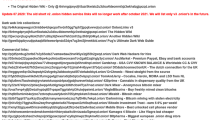Abstract
With the growing popularity of online communication, a certain harassment can be observed to increasingly disavow the positive implications of an universally accessible cyberspace: cybermobbing or cyberbullying. Cybermobbing by digital information and communication technologies can be looked at—in spite of many common characteristics with the classic harassment—as an independent form which is derived from the phenomenon of the analogous harassment. As a result, the findings which were acquired in terms of classic bullying are valid for cybermobbing as well until they are modified or refuted. The main research concern of this study is thus to circumscribe the peculiarities of a phenomenon of Internet abuse known as cybermobbing or cyberbullying within a comparative reference framework. In the course of these treatises, the online disinhibition effect will be elaborated as the mainspring of an insulting Internet. Finally, the role of bystanders of cybermobbing will be explored in more detail.


Similar content being viewed by others
References
Bündnis Gegen Cybermobbing e.V.: Cyberlife—Spannungsfeld zwischen Faszination und Gefahr. Cybermobbing bei Schülerinnen und Schülern. Eine empirische Bestandsaufnahme bei Eltern, Lehrkräften und Schülern/innen in Deutschland, verfügbar unter: http://www.buendnis-gegen-cybermobbing.de/Studie/cybermobbingstudie.pdf (2013)
Döring, N.: Sozialpsychologie des Internets. Die Bedeutung des Internets für Kommunikationsprozesse, Identitäten, soziale Beziehungen und Gruppen, 2., vollst. überarb. und erw. Aufl. Hogrefe, Göttingen (2003)
Fawzi, N.: Cyber-Mobbing. Ursachen und Auswirkungen von Mobbing im Internet. Nomos Verlagsgesellschaft, Baden-Baden (2009)
Grimm, Petra, Rhein, S., Clausen-Muradian, Elisabeth: Gewalt im Web 2.0. Der Umgang Jugendlicher mit gewalthaltigen Inhalten und Cyber-Mobbing sowie die rechtliche Einordnung der Problematik. Vistas, Berlin (2008)
Hinduja, S., Patchin, J.W.: Bullies move beyond the schoolyard. A prelimenary look at cyberbullying. Youth Violence Juvenile Justice 4, 148–169 (2006)
Hinduja, S., Patchin, J.W.: Cyberbullying. An exploratory analysis of factors related to offending and victimization. Deviant Behav. 29, 129–156 (2008)
Hinduja, S., Patchin, J.W.: Cyberbullying. An update and synthesis of the research. In: Hinduja, J.S., Patchin, J.W. (eds.) Cyberbullying Prevention and Response: Expert Perspectives, pp. 13–35. Routledge, New York (2012)
Katzer, C.: Cybermobbing. Wenn das Internet zur W@ffe wird. Springer Spektrum, Heidelberg (2014)
Kepplinger, H.-M.: Reciprocal effects. Towards a theory of mass media effects on decision makers. Harvard Int J Press Politics 12(2), 3–23 (2007)
Kunczik, M., Zipfel, A. (2006): Gewalt und Medien. Ein Studienhandbuch, 5., völlig überarb. Auflage., Köln [u.a.]: Böhlau
Scheithauer, H., Hayer, T., Petermann, F.: Bullying unter Schülern. Erscheinungs-formen, Risikobedingungen und Interventionskonzepte. Hogrefe Verlag für Psy-chologie, Göttingen (2003)
Schultze-Krumbholz, A., Zagorscak, P., Siebenbrock, A., Scheithauer, H.: Medienhelden. Unterrichtsmanual zur Förderung der Medienkompetenz und Prävention von Cybermobbing. Reinhardt, München (2012)
Sitzer, P., Marth, J., Kocik, C., Müller, K.N.: Ergebnisbericht der Online-Studie „Cyberbullying bei Schülerinnen und Schülern. Institut für interdisziplinäre Konflikt- und Gewaltforschung (IKG), Universität Bielefeld, verfügbar unter http://www.uni-bielefeld.de/cyberbullying/downloads/Ergebnisbericht-Cyberbullying.pdf (2012)
Stephenson, P., Smith, D.: Bullying in junior school. In: Tattum, D.P., Lane, D.A. (eds.) Bullying in schools, pp. 45–58. Trentham, Stroke-on-Trent (1989)
Suler, J.: The online disinhibition effect. Cyber Psychol. Behav. 7(3), 321–326 (2004)
Weber, M., Ziegele, M., Schnauber, A.: Blaming the victim. The effects of extraversion and information disclosure on gulit attributions in cyberbullying: cyberpsychology. Behav. Soc. Netw. 16(4), 245–259 (2013)
Author information
Authors and Affiliations
Corresponding author
Rights and permissions
About this article
Cite this article
Pieper, A.K., Pieper, M. The insulting Internet: universal access and cyberbullying. Univ Access Inf Soc 16, 497–504 (2017). https://doi.org/10.1007/s10209-016-0474-z
Published:
Issue Date:
DOI: https://doi.org/10.1007/s10209-016-0474-z




